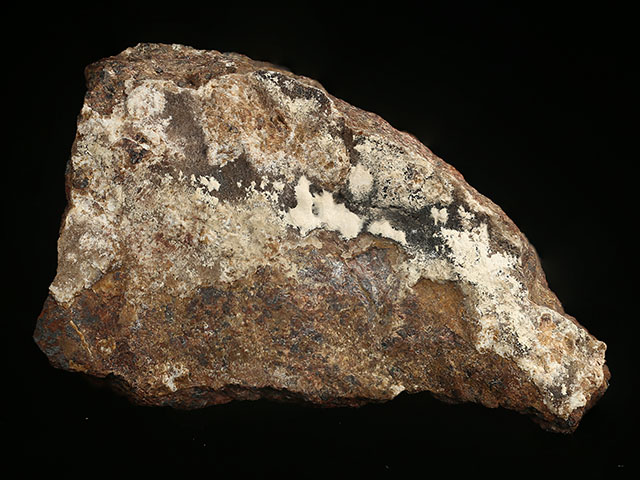Home > Laskowski Ⅹ – April 6 > MS2009 Magnesiochlorophoenicite
Magnesiochlorophoenicite - Sold
- Sterling mine
- (2300' level)
- Sussex County
- New Jersey
- U.S.A.
- 7.6 × 4.6 × 2.0 cm – Small cabinet specimen (under 10 cm)
Magnesiochlorophoenicite is a hydrous magnesium zinc arsenate. Professor Charles Palache described magnesium chlorophoenicite in his Minerals of Franklin and Sterling Hill (1935), naming the species for its chemical relationship to chlorophoenicite. Chlorophoenicite, in turn, takes its name from Greek roots chloro for green and phoinikos for purple-red, for its two differing appearances under natural and incandescent light respectively (Foshag & Gage, 1924). Decades later, Dunn (1981) found an isostructural relationship between chlorophoenicite and magnesiochlorophoenicite, and also found zinc essential to both species. Dunn concluded the distinction of the two species was their magnesium to manganese ratio, noting that magnesiochlorophoenicite is apparently rarer than chlorophoenicite. In a bulk action of the International Mineralogical Association, the mineral name changed to magnesiochlorophoenicite (Burke, 2008).
This specimen consists of willemite-andradite matrix, with depression hosting white billowy magnesiochlorophoenicite. The coverage is a triangular area, 15 × 6 mm. From the collection of E.R. Laskowski (1949-2020), a mining engineer who retired to Tucson, Arizona. A vintage typed E.S.I. (i.e. Earth Science Imports, a partnership between Charlie Key and Rick Smith lasting 1966-1970) label accompanies the specimen. This specimen has not been analyzed.




